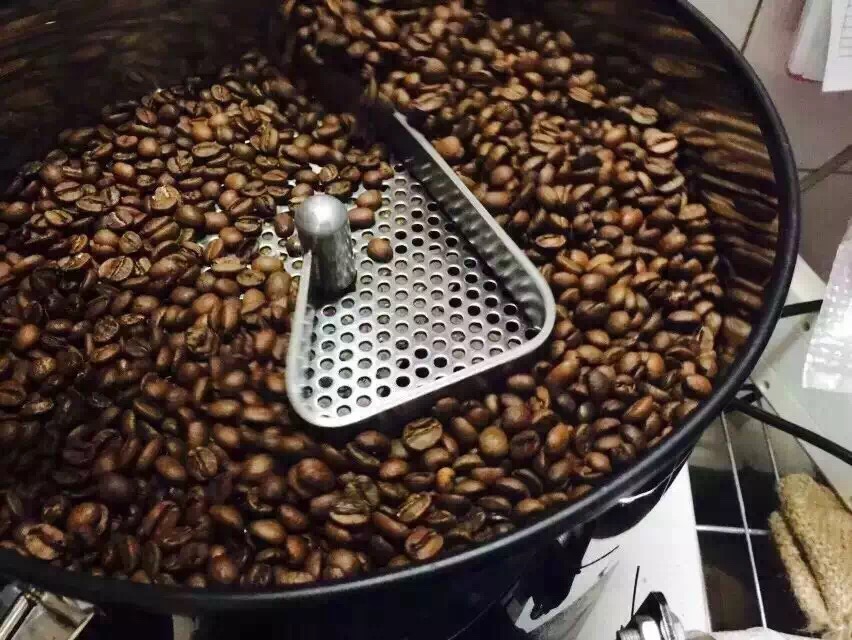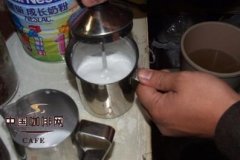About the necessary cloth skills for a good cup of coffee!
Many people know the impact of this step on the production of Espresso. In fact, there is still a small step before this, which has a great impact on the subsequent powder pressing and extraction. Today, let's talk about a small step before pressing powder-the influence of powder distribution on the subsequent steps.

Cloth powder, in fact, is in the coffee powder after grinding, the coffee powder manually into the powder bowl and make it evenly distributed process. The most important thing in this step is to be uniform. After the coffee powder is put into the powder bowl, the coffee powder will not be automatically distributed evenly, but will be piled up together. Generally, there are many parts in the middle of the powder bowl, and some parts of the powder bowl are not covered with coffee powder. If there is no powder distribution step, it will be evenly distributed. Then the powder pressing step after this is difficult to achieve uniformity and compactness, and it is difficult to achieve perfect extraction.
So how to achieve uniform powder distribution?
It's actually quite simple. After putting the coffee powder into the powder bowl, gently tap the edge of the powder bowl to make the coffee powder slide to the edge of the powder bowl to achieve basic coverage; then use your fingers or powder bin cover to move the coffee powder from the more places to the surroundings to make the coffee powder evenly distributed in the powder bowl.
The use of finger pushing is more suitable for dual-ended handles (i.e. handles that can make two cups of Espresso at the same time) than for single-ended handles. Because the bottom of the double-headed powder bowl is a plane, this requires that the coffee powder should be evenly distributed so that each part of the coffee powder has the same thickness, which is convenient for the control of the powder pressing force and the overall uniformity. The bottom of the single-headed powder bowl is not a plane, and it is generally a two-step stepped structure from the outer edge of the powder bowl to the center. This makes the central part of the coffee powder after the completion of the surface of the coffee powder to form a plane, the thickness of the coffee powder in the central part is thicker than the edge part, so that although the central part and the edge part are subject to the same pressure when pressing the powder, the degree of compaction is different, which has a great impact on the later extraction. Therefore, at this time, it is required that after the coffee powder is evenly distributed, the surface should be slightly concave in the middle (so that the overall thickness of the coffee powder can be kept consistent), and then it is easier to achieve uniform compaction. Therefore, it is not suitable to push with fingers at this time, but it is more suitable to scrape a part of coffee powder from the middle of the powder bowl with the edge of the lid of the powder bin to form a downward concave shape.
How to determine whether the uniform powder distribution effect has been achieved? In addition to careful execution and careful observation, the production process can also provide clues to determine whether the powder is affecting the quality of the extract and Espresso.
Generally, the extraction time should be controlled at about 25~30 seconds, but sometimes it will be found that the state of coffee outflow will soon become unstable, the large jump, and the color will soon become very light. At this time, it can be judged: There are problems inside the cake (cracks) or uneven powder pressing so that the less coffee powder part is over-extracted (and this is also likely to be uneven powder distribution caused by uneven powder pressing) or uneven powder distribution, so that the edge is not covered by coffee powder, causing water to flow directly through there. After extraction, remove the handle and observe the shape of the powder cake. If there is no coffee powder at the edge, or the coffee powder is soaked, it is because the powder is not evenly distributed. Then the next adjustment will start with the cloth powder.
It can be seen that although the cloth powder is only a simple action, it can have such a big impact on the subsequent steps.
Important Notice :
前街咖啡 FrontStreet Coffee has moved to new addredd:
FrontStreet Coffee Address: 315,Donghua East Road,GuangZhou
Tel:020 38364473
- Prev

What is spelled with coffee beans?
Jiaxiang Guide: there are more than 100 coffee producing areas in the world, and the coffee beans produced have their own characteristics. The mixing of coffee beans is to balance the flavor of coffee in order to create an unparalleled delicacy. A single coffee bean generally lacks the complex flavor necessary to make a delicious cup of coffee. Many blends contain three to seven different types of beans. The master of baking knows every kind.
- Next

How to make the technique of hand-beating milk foam suitable for flower-pulling in the family?
In the understanding of coffee friends, milk foam can make perfect milk foam only on a professional coffee machine. It is generally believed that such milk foam can be used for coffee flower pulling (what utensils are needed for coffee flower pulling), but what we bring today is hand-beating milk foam. Use the simplest tools and milk powder to make hand-made milk bubbles suitable for flower-pulling in the family. First of all, let's talk about the materials needed for hand-beating milk foam: 1.
Related
- What is the meaning of lactic acid fermentation with coffee bean treatment?
- How to judge the state of foam by sound?
- How does the latte pull out the unicorn pattern? Come to get for a little trick to improve the flower pull!
- Will flower pulling affect the taste of the latte?
- Do you know the history of coffee?
- The difference between honey treatment and sun washing what is raisin honey treatment?
- What kind of milk can a novice use to make coffee foam to keep the foam longer? The correct method and skills of milking tutorial sharing
- Why do washed coffee beans taste sour? Flavor characteristics of washed Coffee
- Introduction to the skill of how to practice the size and height of water injection around the circle of hand-brewed coffee
- How do beginners practice coffee flower drawing from scratch?

